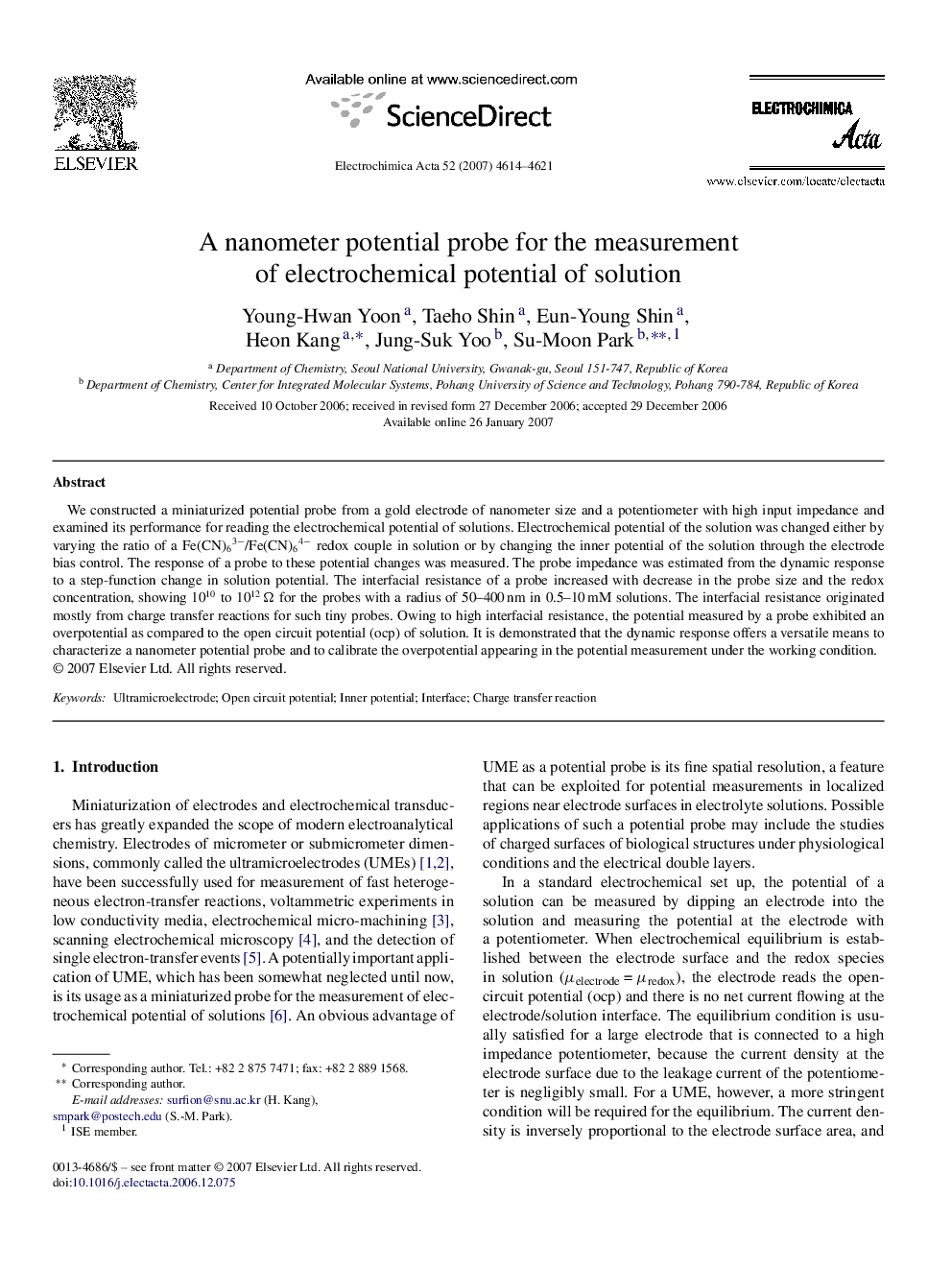| کد مقاله | کد نشریه | سال انتشار | مقاله انگلیسی | نسخه تمام متن |
|---|---|---|---|---|
| 194555 | 459795 | 2007 | 8 صفحه PDF | دانلود رایگان |

We constructed a miniaturized potential probe from a gold electrode of nanometer size and a potentiometer with high input impedance and examined its performance for reading the electrochemical potential of solutions. Electrochemical potential of the solution was changed either by varying the ratio of a Fe(CN)63−/Fe(CN)64− redox couple in solution or by changing the inner potential of the solution through the electrode bias control. The response of a probe to these potential changes was measured. The probe impedance was estimated from the dynamic response to a step-function change in solution potential. The interfacial resistance of a probe increased with decrease in the probe size and the redox concentration, showing 1010 to 1012 Ω for the probes with a radius of 50–400 nm in 0.5–10 mM solutions. The interfacial resistance originated mostly from charge transfer reactions for such tiny probes. Owing to high interfacial resistance, the potential measured by a probe exhibited an overpotential as compared to the open circuit potential (ocp) of solution. It is demonstrated that the dynamic response offers a versatile means to characterize a nanometer potential probe and to calibrate the overpotential appearing in the potential measurement under the working condition.
Journal: Electrochimica Acta - Volume 52, Issue 14, 1 April 2007, Pages 4614–4621